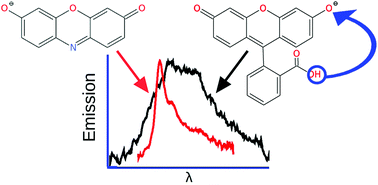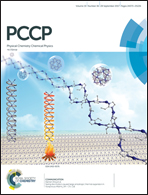Sibling rivalry: intrinsic luminescence from two xanthene dye monoanions, resorufin and fluorescein, provides evidence for excited-state proton transfer in the latter†
Abstract
While the emission spectrum of fluorescein monoanions isolated in vacuo displays a broad and featureless band, that of resorufin, also belonging to the xanthene family, has a sharp band maximum, clear vibronic structure, and experiences a small Stokes shift. Excited-state proton transfer in fluorescein can account for the differences.

- This article is part of the themed collection: 2017 PCCP HOT Articles


 Please wait while we load your content...
Please wait while we load your content...